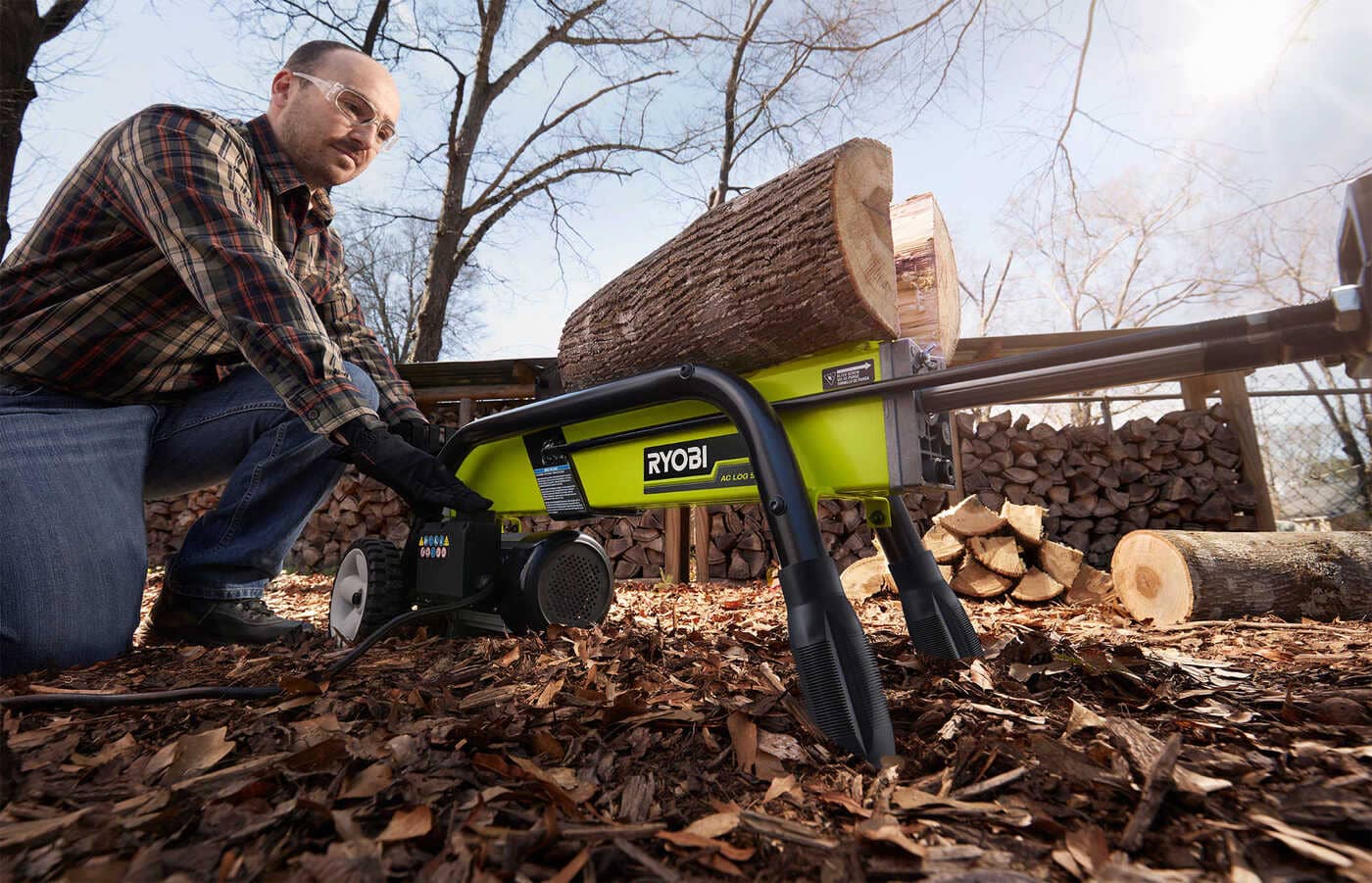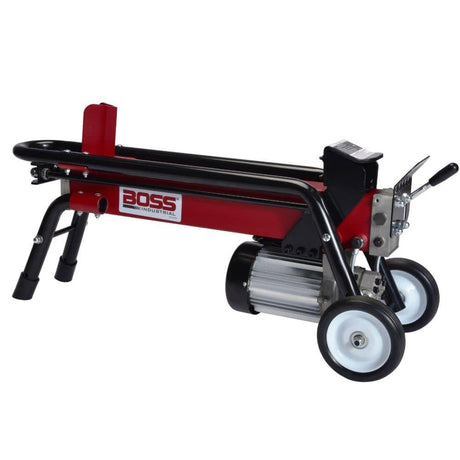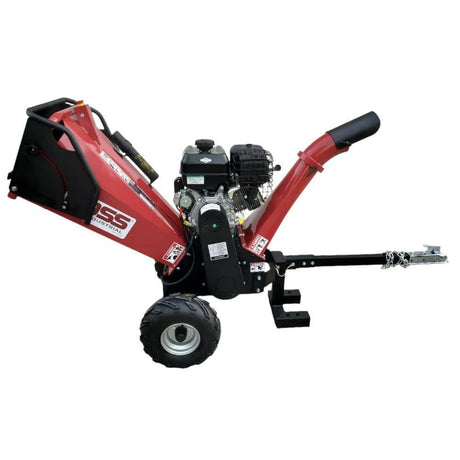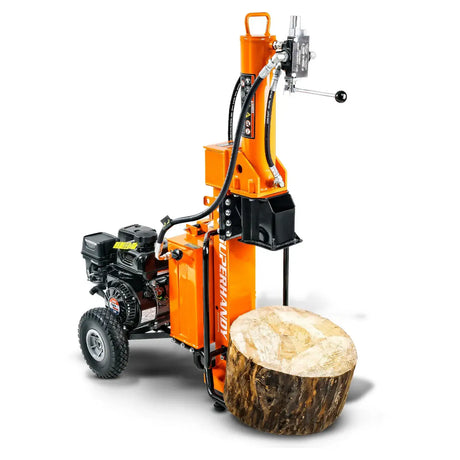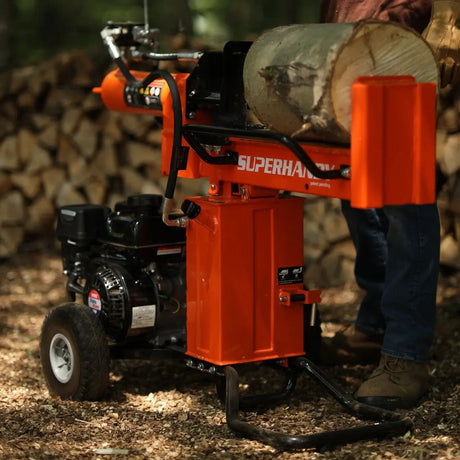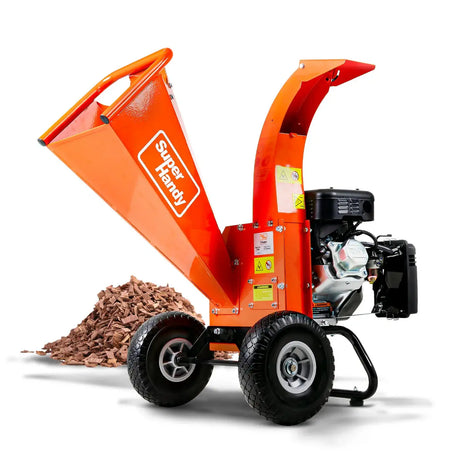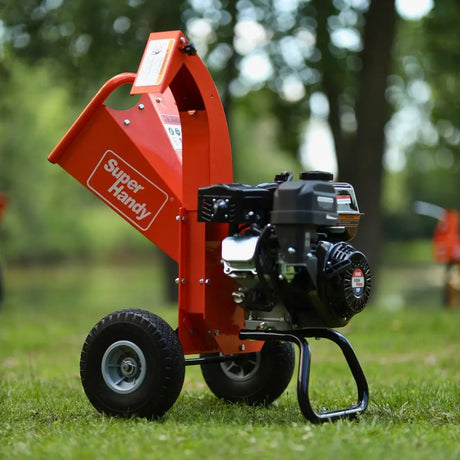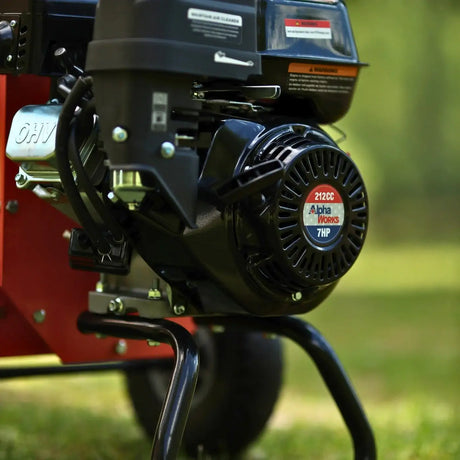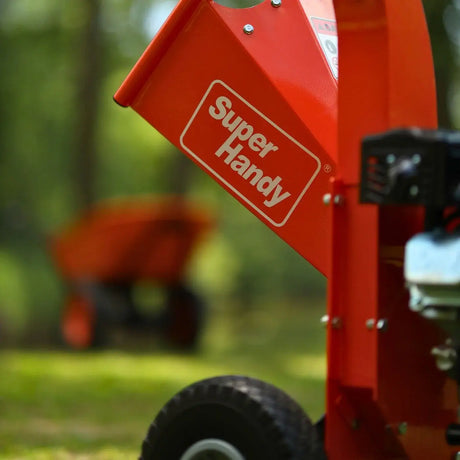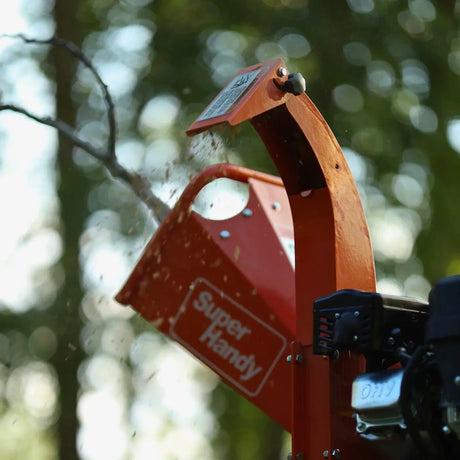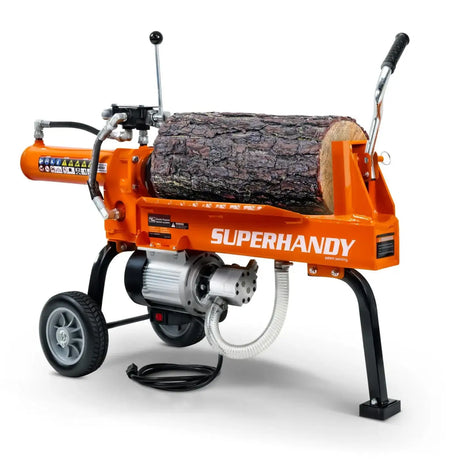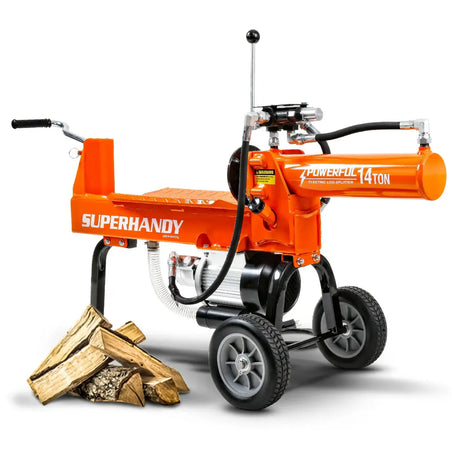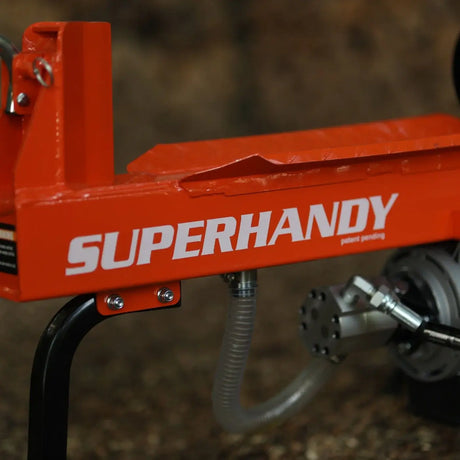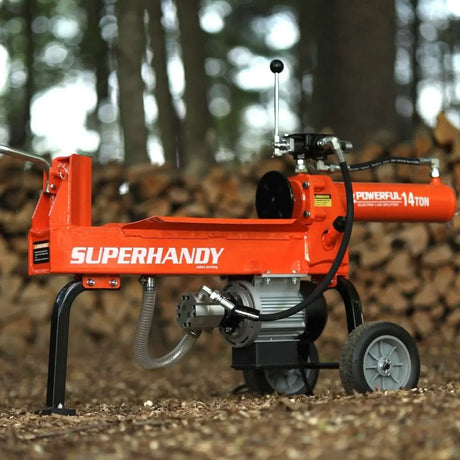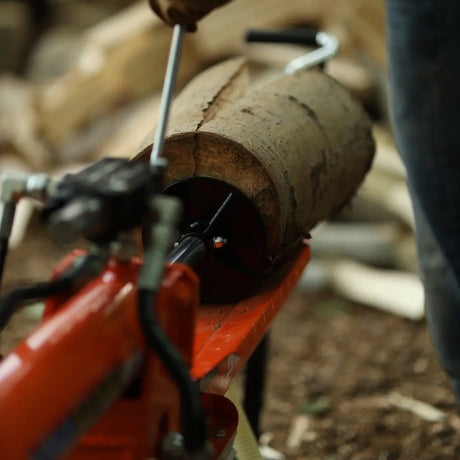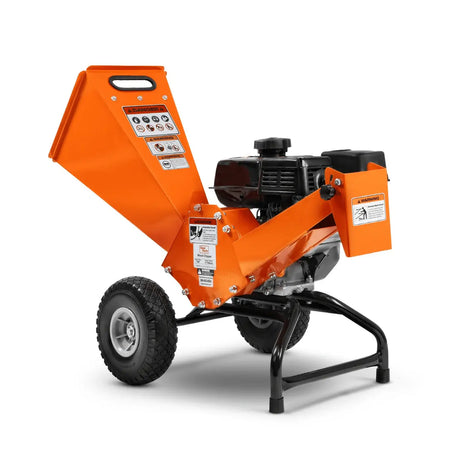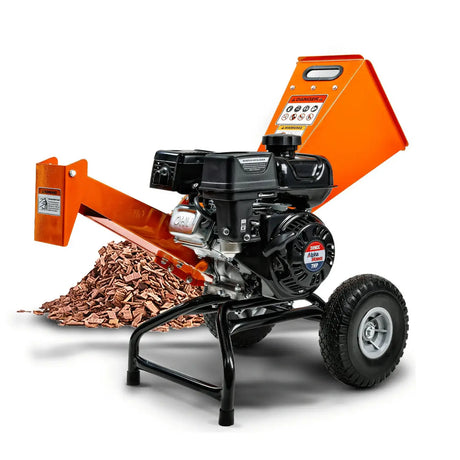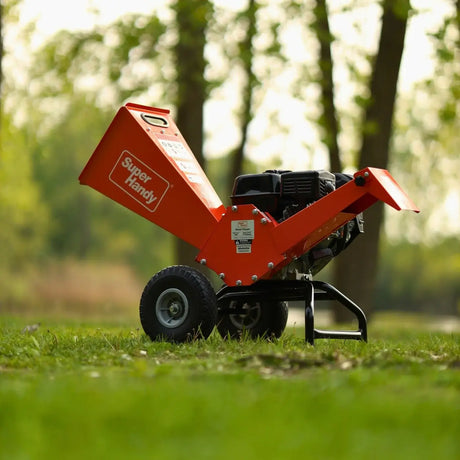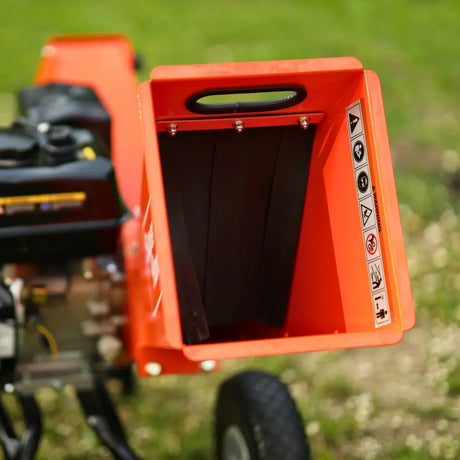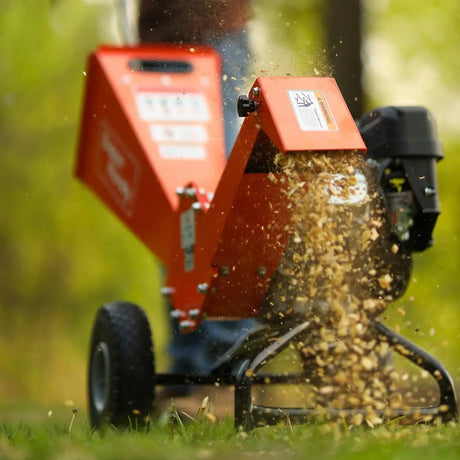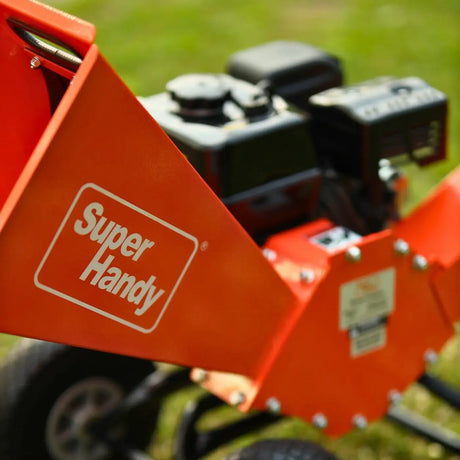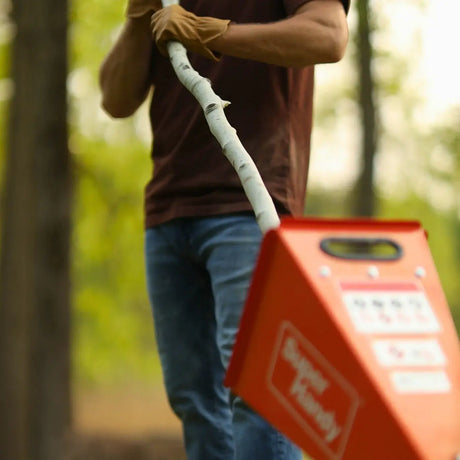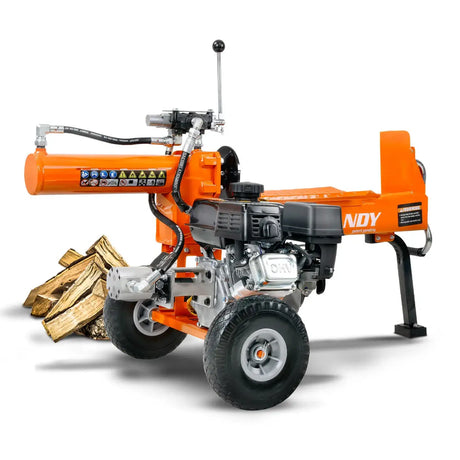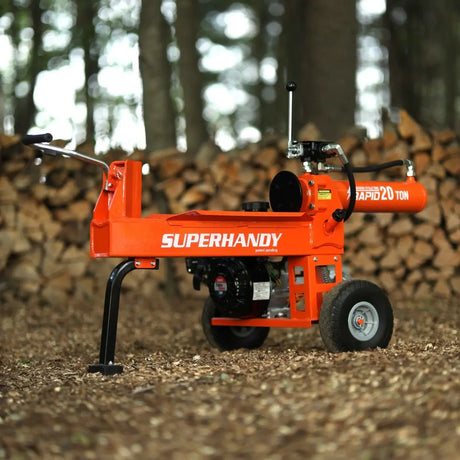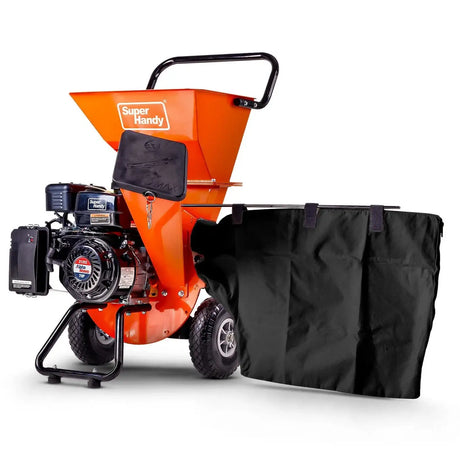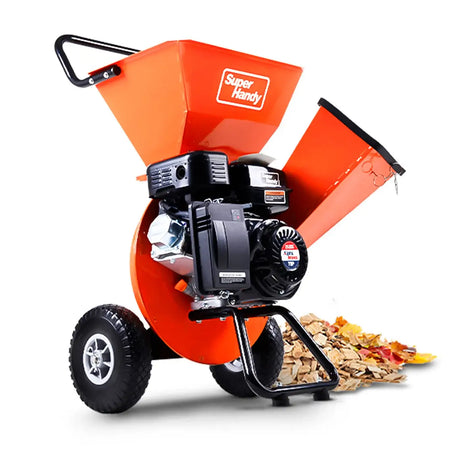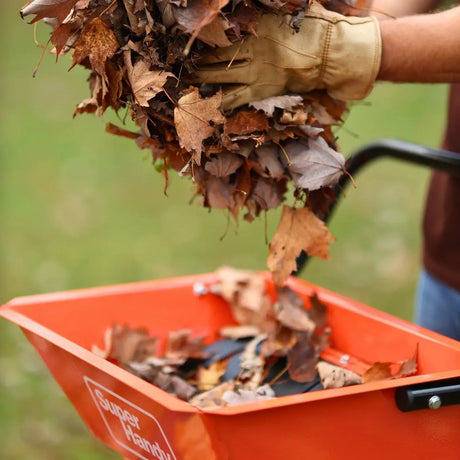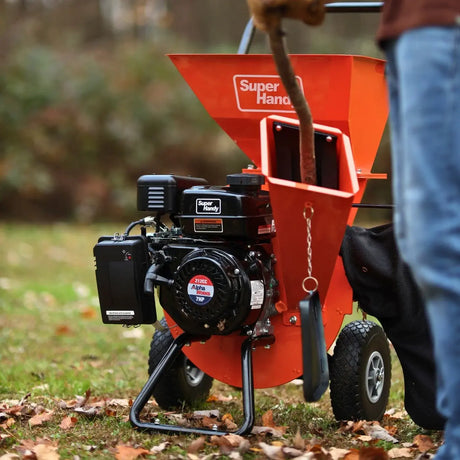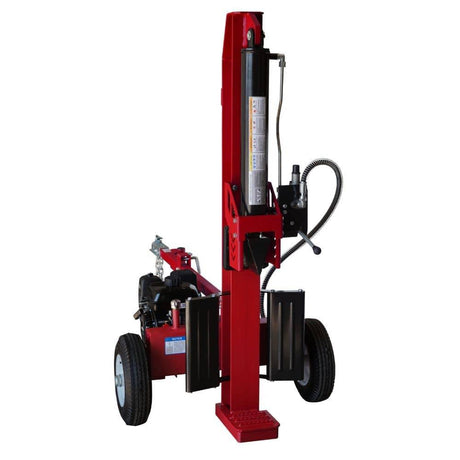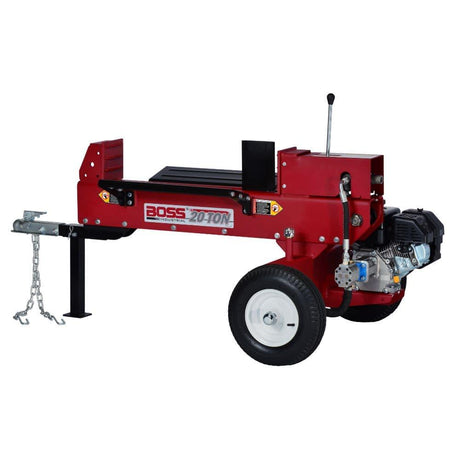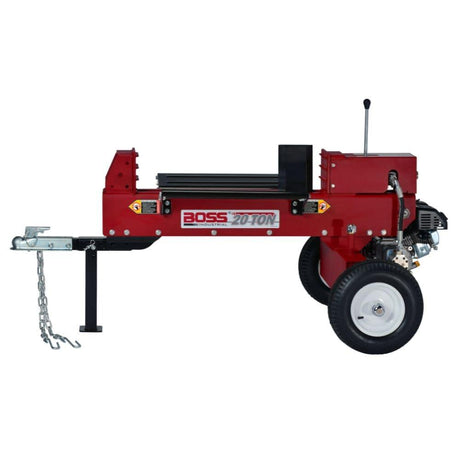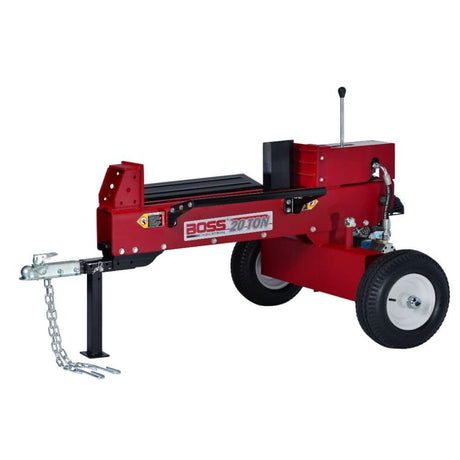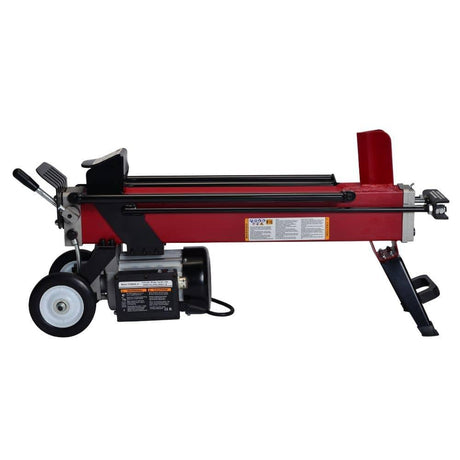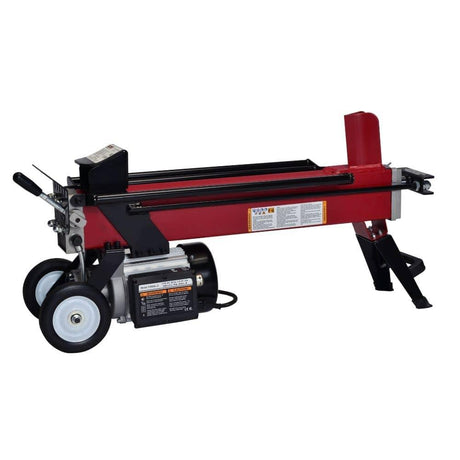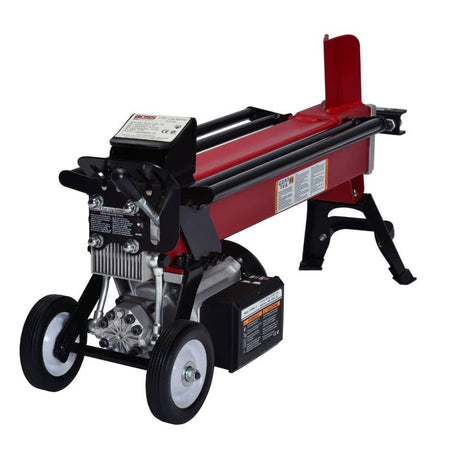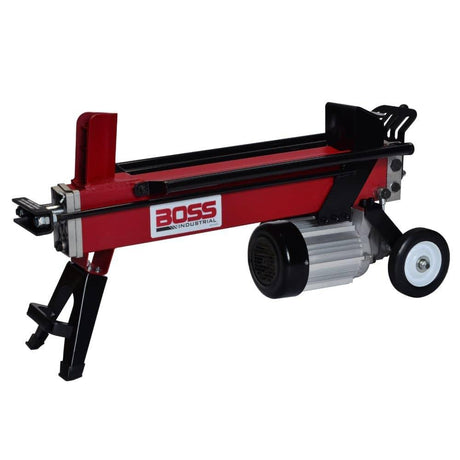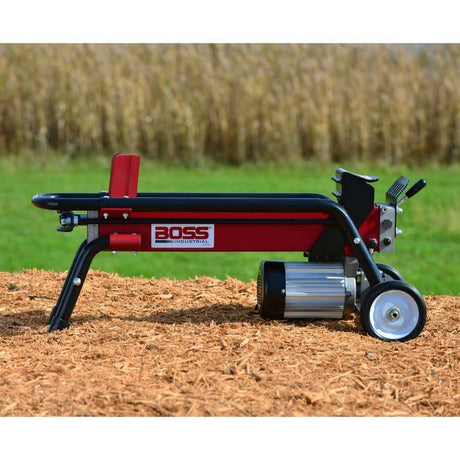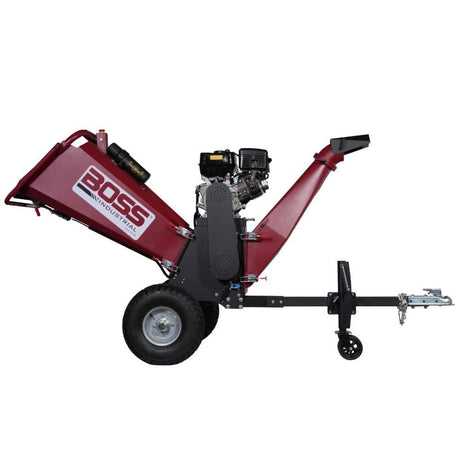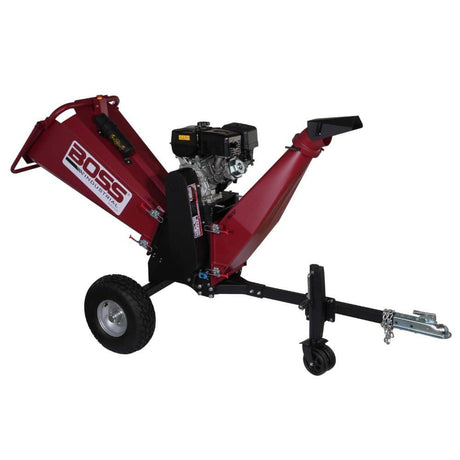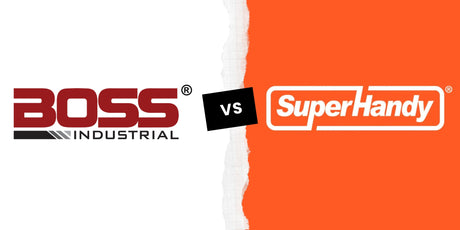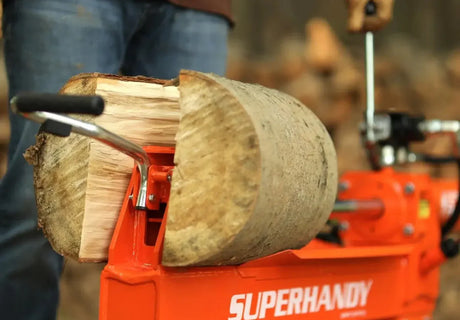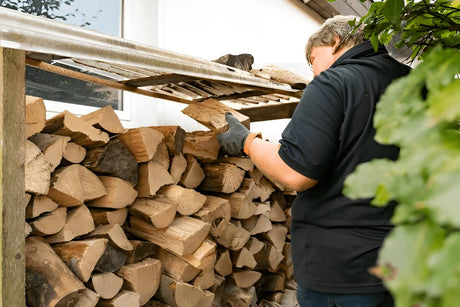Wondering what size log splitter you need? It all depends on the type of wood, its condition, and how often you split. This practical guide helps you avoid overkill and pick the right power for your exact needs.
Understanding Log Splitter Sizes and How They Work
What Does "Tonnage" Really Mean?
Tonnage is the measure of force a log splitter applies to break apart a log. It doesn't refer to weight-it refers to pressure. Think of it like the push behind the wedge.
For example, a 10-ton splitter pushes with 20,000 pounds of force. That's enough for small, seasoned logs. But start dealing with green hardwood or thick, knotty rounds, and you'll want something closer to 25-30 tons-or more.
The bigger the tonnage, the more power to split tougher wood. But more tonnage isn't always better-it can be overkill for lighter work. That's where knowing how many tons of force you need for your specific type of wood comes in.
How Log Splitters Apply Force to Wood
Every log splitter-whether gas, electric, or kinetic-drives a ram against a log, forcing it into a metal wedge. That wedge does the splitting.
- Hydraulic splitters (most common) build pressure slowly using hydraulic fluid to push the ram forward.
- Kinetic splitters store energy in flywheels and release it all at once, delivering a lightning-fast strike.
Different types of log splitters, including horizontal and vertical models, allow users to efficiently split wood. Hydraulic lifts and ergonomic designs facilitate easier handling of split wood, ensuring a streamlined process during wood splitting.
Regardless of the method, the goal is the same: push the log hard enough that it breaks apart along the grain.
A seasoned piece of pine might fall apart with minimal pressure. A green chunk of oak? That'll fight back. Which is why matching the right force to the job saves time-and your sanity.
Types of Wood That Require Different Splitting Forces
Different woods have different densities. Here's a quick reference by wood category to help you classify the kind you're working with:
| Wood Category | Examples |
|---|---|
| Softwood | Pine, Spruce, Fir, Poplar, Cottonwood, Alder, Basswood |
| Medium Hardwood | Walnut, Ash, Magnolia, Elm, Beech |
| Hard Hardwood | Maple, Oak, Birch, Cedar |
| Very Hard Hardwood | Hickory, Locust, Dogwood |

Factors That Affect the Size of Log Splitter You Need
Wood Type: Hardwood vs. Softwood
Not all wood is created equal.
The type of wood significantly affects the force required for splitting. Softwoods like pine, spruce, and fir split easily. Their fibers are looser, and they dry out faster. You can usually get away with a smaller electric splitter in the 6-10 ton range, especially if the logs aren't too thick.
Hardwoods-oak, hickory, maple-are a different story. They're denser, heavier, and often knottier. To split them cleanly, especially when wet, you'll need at least 20-30 tons of force.
Quick tip: If the tree feels heavy when you try to move a log, it's probably hardwood-and it'll need more muscle to split.
Log Diameter and Length
Size absolutely matters.
- Logs under 10 inches in diameter? You can usually get by with 6-10 tons.
- Logs in the 12-18 inch range? You'll want at least 15-25 tons.
- Logs over 20 inches? Plan for 30+ tons, especially with hardwood.
Log length also plays a role. Longer logs can bind against the wedge, increasing resistance. If you're regularly splitting logs over 20 inches long, give yourself more power to avoid jams and frustration.
Wood Condition: Green vs. Seasoned
Green wood is freshly cut, full of moisture-and a pain to split.
It's heavier, tougher, and tends to string out as it splits. That resistance means you'll need more tonnage to power through it cleanly.
Seasoned wood, on the other hand, has dried out over months (or years). It cracks easier and splits faster. If you're working with well-seasoned logs, you can usually drop down a tonnage tier.
Here's a quick test: Knock two logs together. If they make a dull thud, they're green. If they "clack" or sound hollow, they're dry-and easier to split.
How Often and How Much You're Splitting
If you're just tackling a few logs after a storm or prepping for weekend campfires, you don't need a beast of a machine. A compact electric splitter will do the job just fine-and save you cash.
But if you're splitting:
- Multiple cords per year
- Large woodpiles from downed trees
- Or running a firewood side hustle
…then go bigger. You'll need something with more force, a faster cycle time, and the stamina to keep up.
Bottom line: Match your splitter to your workload, not just your wood. Overkill is better than underpowered-especially when winter's coming.

Other Factors That Impact Sizing Decisions
Gas vs. Electric Models and How That Affects Size
Electric splitters usually max out around 10-15 tons, making them great for smaller logs and lighter use. Gas-powered models go much higher-up to 40+ tons-and are ideal for bigger jobs or working off-grid.
If you're torn between electric and gas, power matters-but so do things like noise, portability, and long-term cost.
Read our full breakdown here: Gas vs. Electric Log Splitters: Which One Is Better for You?
Engine Power: How HP/CC Relates to Size and Performance
Tonnage tells you what the splitter can push. Engine power tells you how fast and consistently it can do it.
- More horsepower = faster cycle times and better performance under pressure.
- Low-powered engines can bog down on knotty or green logs-even if rated for higher tonnage.
- High-powered engines (200cc+) tend to handle large jobs without flinching, especially in cold weather or back-to-back splitting sessions.
Portability, Weight, and Ease of Use
Let's face it-if moving your splitter is a chore, you'll use it less.
- Electric splitters are lighter and usually have built-in wheels. Most can be rolled by hand and even lifted into the back of a truck if needed.
- Gas splitters are heavy. Some top 500 lbs and need to be towed. They're built tough, but you'll want flat ground and maybe a buddy to move them around.
Ask yourself:
- Will you be splitting in one spot or moving it often?
- Do you need to load it into a trailer?
- Are you working solo?
Weight matters more than you'd think when your yard is muddy or your back's feeling last weekend's project.
Budget and Storage Space Considerations
Tonnage often climbs with the price-and size. Bigger machines take up more room and cost more, both upfront and over time.
Here's how it typically breaks down:
- Under $1,000: Usually electric, compact, up to 10-15 tons.
- $1,000-$2,000: Mid-range gas models, around 20-25 tons.
- $2,000+: Heavy-duty gas splitters with serious tonnage and towing options.
Also consider where you'll store it. A full-size gas splitter needs garage or shed space-and should be covered from rain and snow. Electric units? They can tuck into a corner or even stand upright to save room.
Bottom line: If space or cost is tight, lean electric. If you've got room to store and money to invest, gas opens more doors.

Tonnage Recommendations Based on Real-World Scenarios
| Log Diameter | Softwood (Dry) | Softwood (Green) | Medium Hardwood (Dry) | Medium Hardwood (Green) | Hard Hardwood (Dry) | Hard Hardwood (Green) | Very Hard Hardwood (Dry) | Very Hard Hardwood (Green) |
|---|---|---|---|---|---|---|---|---|
| 6 in. | 4 tons | 7 tons | 6 tons | 9 tons | 7 tons | 16 tons | 10 tons | 20 tons |
| 12 in. | 12 tons | 30+ tons | 15 tons | 30+ tons | 20 tons | 30+ tons | 22 tons | 30+ tons |
| 18 in. | 20 tons | 30+ tons | 20 tons | 30+ tons | 26 tons | 34+ tons | 26 tons | 34+ tons |
| 24 in. | 27 tons | 30+ tons | 27 tons | 30+ tons | 30 tons | 34+ tons | 30 tons | 34+ tons |
<10 Tons - Best for Light Use and Small Logs
If you're only splitting the occasional bundle of firewood or cleaning up small trees from your yard, this range gets the job done-no need to overcomplicate it.
Perfect for:
- Seasoned softwoods like pine or spruce
- Logs under 10 inches in diameter
- Homeowners who split casually, maybe a few weekends a year
These are typically electric models, and they're great for light-duty work in your garage or driveway. Quiet, easy to use, and easy to store.
But heads up: if you throw a big knotty round of oak on a 7-ton splitter, it's going to struggle-or stop. Most splitters in this range are best suited for smaller tasks and short logs. They may lack the cylinder stroke to deal with anything long or tough.
10-20 Tons - Ideal for Medium Logs and Mixed Wood
This is the sweet spot for most homeowners. You get the flexibility to split both softwoods and moderate hardwoods like ash or birch, even if they're still a little green.
Best for:
- Logs up to 14-16 inches in diameter
- A mix of green and seasoned wood
- People who split a couple cords a year for heating or firewood
I've had clients with a 16-ton gas splitter who've gone through full cords of mixed wood each fall without any issues. It's the right balance of tonnage rating, power source, and pump size for regular use. You'll also start to see machines with a two stage pump in this range, which helps improve cycle time and efficiency.
20-30 Tons - For Large Logs and Occasional Heavy Use
Now you're stepping into heavy-duty territory. This range handles just about anything most people will throw at it-especially big, tough rounds of hardwood.
Ideal if you:
- Split large logs (18-24 inches wide)
- Work with hardwoods like oak, hickory, or maple
- Need reliable performance a few times per season
If you've ever tried splitting wet maple by hand, you know how stubborn it can be. A 25-ton splitter makes it feel like butter. With more force and a stronger cylinder, this is a great answer to the common question: "what size log splitter do I need" for the average Joe who wants to tackle both regular jobs and the occasional big stuff.
30+ Tons - For Professionals, Hardwood, or Commercial Volumes
This is serious equipment. Overkill for most homeowners, but essential if you're processing firewood to sell, clearing large properties, or running through multiple cords every month.
Go this big when:
- You need speed and efficiency on high volume
- You're splitting gnarly, twisted, knot-filled hardwood
- You're working remote and can't afford downtime
I've worked with crews who run 35-ton splitters all the time, turning huge oak trunks into neatly stacked piles for clients. A high-powered engine and large pump mean faster cycle time and less strain on the machine when processing green wood or other tough stuff. Be sure to check the valve, cylinder, and stage pump setup before putting down money.
How to Choose the Right Size Log Splitter for Your Needs
Matching Tonnage to Log Type and Volume
Not sure what you need? Use this quick chart to match log type, size, and usage with the right power level.
| Use Case | Log Type | Log Size (Diameter) | Wood Condition | Recommended Tonnage | Suggested Power Source |
|---|---|---|---|---|---|
| Light backyard use, firepit wood | Softwoods (pine, spruce) | Under 10″ | Dry | 6–10 tons | Electric |
| Occasional home heating | Medium wood (ash, birch) | 10–14″ | Dry or semi-green | 10–16 tons | Electric or Gas |
| Regular seasonal splitting | Medium wood (ash, elm) | 14–18″ | Green or Dry | 16–22 tons | Mid-range Gas |
| Heavy-duty homeowner use | Hardwood (oak, maple) | 18–24″ | Mostly green | 22–30 tons | Heavy-duty Gas |
| Commercial or professional volume work | Any (inc. knotty hardwood) | 24″+ | Green or Dry | 30+ tons | Pro-grade Gas (towable) |
Still not sure? Browse our top-rated log splitters to compare features and find your match.
Can’t Decide? Here’s the Rule of Thumb
- Under 10″, dry softwood → 6–10 tons
- 10–18″, mixed wood → 15–22 tons
- Over 18″ or green hardwood → 25–35+ tons
When in doubt? Go one step up—but not three. More power helps, but too much is just a heavier, pricier hassle.
When to Go Bigger (and When It's Overkill)
Bigger isn't always better.
I've seen plenty of folks overspend on a 30-ton splitter when they really only needed 15. Sure, it's satisfying watching logs pop apart with barely a push-but that power often goes unused.
You should go bigger if:
- You regularly split logs over 18 inches wide
- You work with green hardwood
- You're running through cords at a time, not just stacks
You should hold back if:
- Your wood is mostly softwood and well-seasoned
- You're only splitting occasionally
- You want something easier to move and store
A 25-ton machine looks great in the driveway-until you try to wheel it uphill alone.
Mistakes to Avoid When Choosing Log Splitter Size
Don't fall into the common traps:
- Too small? It stalls, overheats, and wastes time-especially on green or oversized logs.
- Too big? You'll overspend, burn more fuel, and haul around power you may never use.
- Ignore log length or power access? You'll run into problems deep in the woods or with long, frozen rounds.
- Skip cycle time? You'll regret it if you're doing volume work.
Don't Buy Too Big (If You Don't Need It)
More tonnage sounds nice-but can be total overkill. You'll:
- Spend more
- Struggle with size and weight
- Waste capability on small, easy wood
Buying a 35-ton beast to split dry pine twice a year? That's like using a bulldozer to plant tulips.
Don't Go Too Small (If You Want to Avoid Frustration)
Underpowered splitters turn easy jobs into a grind:
- Multiple passes
- Overheating
- Manual splitting when it fails
If in doubt, size slightly up-especially for cold weather, mixed wood, or anything over 12" in diameter.

Know Your Wood, Know Your Needs
Here's the bottom line: Your ideal log splitter depends on three things:
- What kind of wood you're splitting (softwood, hardwood, green wood, seasoned wood)
- How big and how often you're doing it (log diameter, log length, and quantity)
- Where and how you plan to use the machine (power source, terrain, storage)
Once you've got a handle on that, the right size becomes obvious. You'll end up with a tool that fits your workflow-not one that collects dust or causes headaches.
And remember, you don't need to impress anyone with tonnage numbers. You just need clean, easy splits and a machine that keeps up with your pace and handles the components of a real job-from pump to cylinder to wedge design.


